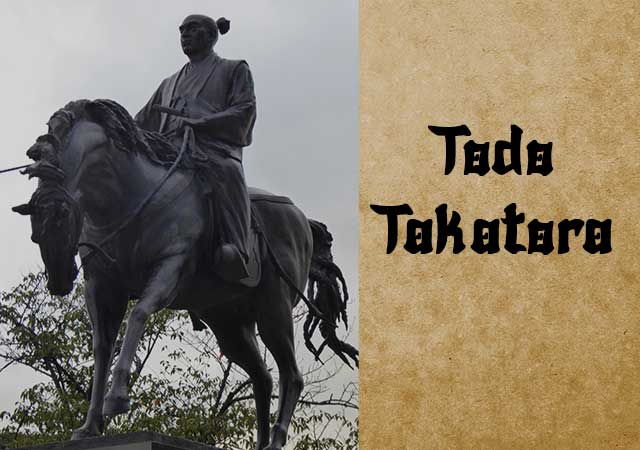
Todo Takatora hailed from Todo Village in Omi Province (present-day Shiga Prefecture). Beginning his military journey as a humble ashigaru foot soldier, he ascended to the esteemed rank of daimyo, displaying remarkable flexibility by changing allegiances seven times and serving under ten different warlords.
Standing at an impressive height of 190cm, Todo Takatora towered over his contemporaries in an era when the average height ranged from 160 to 170cm. Beyond his prowess on the battlefield, Takatora demonstrated aptitude in administration and harbored a deep interest in culture, literature, Noh theater, and the tea ceremony. His enduring legacy in castle design and architecture remains unparalleled in samurai history.
Born in 1556 to Todo Torataka, a samurai in the service of the Azai clan of Omi, Takatora's military journey commenced with his participation in the Battle of Anegawa in 1570, fighting under Isono Kazumasa against Oda Nobunaga. Subsequently, he served under Nobunaga himself before becoming the Chief Retainer of Hashiba Hidenaga, half-brother of Toyotomi Hideyoshi, and engaging in campaigns against the Mori clan in the Chugoku Region.
He continued his military endeavors, participating in the Battle of Shizugatake in 1583 and later contributing to Hideyoshi’s Kyushu Campaign. His invaluable assistance in pacifying Kyushu led to a significant increase in his revenues, raising them to 30,000 koku.
During Hideyoshi’s Korean Campaigns, Todo Takatora demonstrated his prowess in both land and sea operations, earning him the prestigious 80,000 koku fief of Osu in Iyo Province in 1594. While stationed in Korea, he constructed Suncheon Castle, which remains the sole surviving Japanese castle in the southwestern districts of the peninsula.
Renowned for his architectural skills, Todo Takatora played a pivotal role in the construction of Jurakudai, Hideyoshi’s opulent palace in Kyoto. In 1598, prior to Hideyoshi’s passing, Takatora shifted his allegiance to Tokugawa Ieyasu. His allegiance proved instrumental in the Battle of Sekigahara in 1600, where he commanded 2,500 men, resulting in a substantial increase in his stipend to 200,000 koku at Iyo.
In 1608, Todo Takatora was transferred to Ise Province, where his stipend was further augmented to 333,950 koku. Assigned with the task of reconstructing Iga Ueno Castle in preparation for Ieyasu’s impending assault on the Toyotomi stronghold in Osaka, Takatora faced a setback when a severe typhoon demolished the unfinished keep, resulting in casualties. Urged by Ieyasu to prioritize other sections of the castle in light of the impending conflict, Takatora redirected resources accordingly.
Takatora played a pivotal role in the Siege of Osaka, Summer Campaign, achieving a significant victory at the Battle of Yao by defeating Chosokabe Morichika. Tragically, his two sons, Takanori and Ujikatsu, lost their lives in the heat of battle.
Highly esteemed by Tokugawa Ieyasu, Takatora remained a steadfast companion and trusted advisor during the retired shogun’s final years. Following Ieyasu's passing, Takatora continued his service under the shoguns Hidetada and Iemitsu. Under Iemitsu's reign, he oversaw the construction of the Nikko Toshogu Shrine in honor of Ieyasu's legacy.
In 1620, Takatora took charge of the extensive reconstruction of Osaka Castle, a project completed just a year before his passing in Edo at the age of 74 in 1630. His architectural prowess extended beyond Osaka Castle, as he was also involved in the renovations of nearby Takatsuki Castle, Amasaki Castle, and Akashi Castle.
Renowned for his innovative architectural techniques, Takatora revolutionized castle construction by introducing the cost-effective Sotogata type tenshu keeps, which were quicker and more economical to build compared to the traditional Borogata style. His castles were distinguished by their imposing walls, notably exemplified by the formidable defenses of Iga Ueno Castle. Additionally, he refined the Masugata type gate systems, enhancing the defensive capabilities of the castles he designed.
See also
-
Nitta Yoshisada
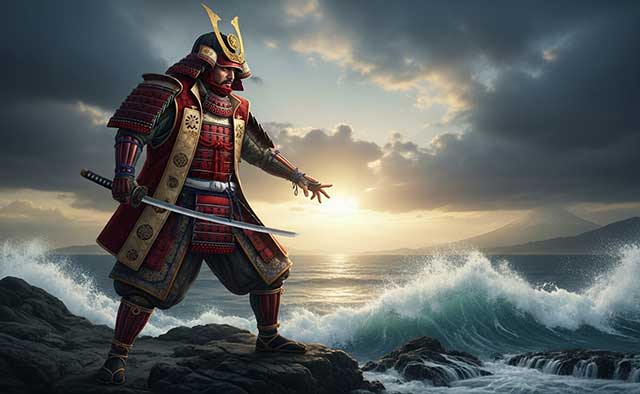
Nitta Yoshisada was a loyal soldier of Emperor Go-Daigo, who in the 1330s attempted to restore direct imperial rule in Japan. The Nitta family was related to the Ashikaga house and was older in lineage. However, they did not join Minamoto Yoritomo at the start of his war with the Taira, as the Ashikaga did, and therefore did not receive high positions in the Kamakura shogunate. This may have been one of the reasons why Yoshisada rose against the Hōjō clan in 1333.
-
Natsume Yoshinobu
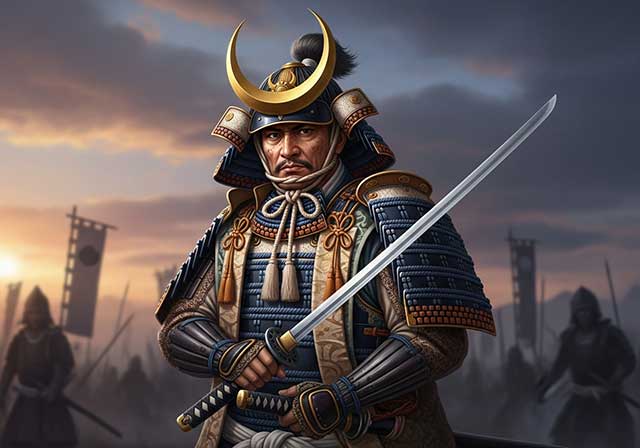
Yoshinobu, a long-time vassal of the Matsudaira and Tokugawa clans, governed Hamamatsu Castle on behalf of the Tokugawa house. During the clashes between the Imagawa, Takeda, and Matsudaira clans, he served in the garrison of Nagasawa Castle and in 1562 took part in raids under the command of Itakura Shigezane. When, in 1563, a revolt of the Sōtō-shū sect followers broke out in Mikawa Province, Yoshinobu joined the rebels together with Honda Masanobu and Hachiya Sadatsugu.
-
Nambu Nobunao
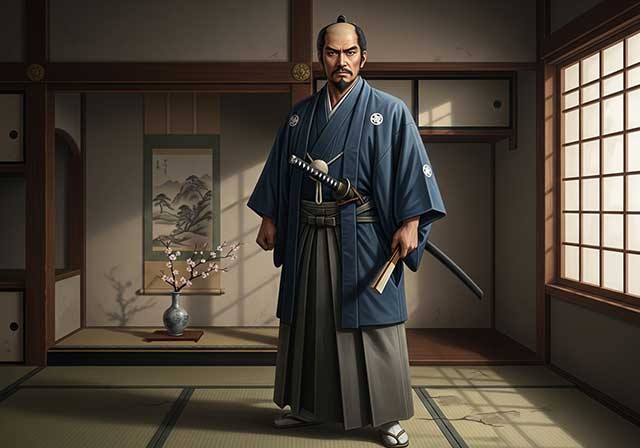
The Nambu clan was an ancient and powerful family that traced its lineage back to the Minamoto shoguns and had controlled a significant part of the Tohoku region in northern Honshu since the 12th century. Nobunao was born in Ikatai Castle, located in what is now the city of Iwate. He was the second son of Ishikawa (Nambu) Takanobu, the 22nd head of the Nambu clan. In 1565, Nobunao’s uncle, Nambu Harumasa, adopted him, brought him to Sannohe Castle, and named him his heir, later giving his daughter in marriage to him.
-
Naito Ienaga
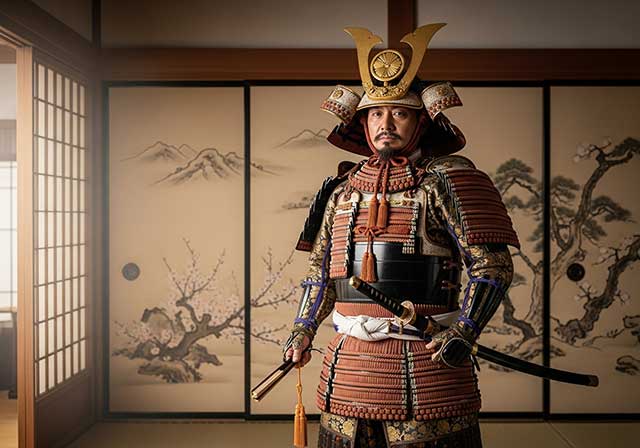
Ienaga was the son of Naitō Kiyonaga and served Tokugawa Ieyasu from an early age. Like his father, he was exceptionally brave, and thanks to his remarkable skill with the bow, he earned the nickname “the unrivaled archer.” Although both the elder and the younger Naitō belonged to the Jōdo Shinshū (“True Pure Land”) sect, during the Ikkō-ikki uprising in Mikawa Province in 1565, Ienaga did not support his fellow believers and instead sided with Tokugawa Ieyasu, earning his special trust. He later took part in the battles of Mikatagahara, Nagashino, and many other engagements while accompanying Ieyasu.
-
Minamoto no Yoshitsune
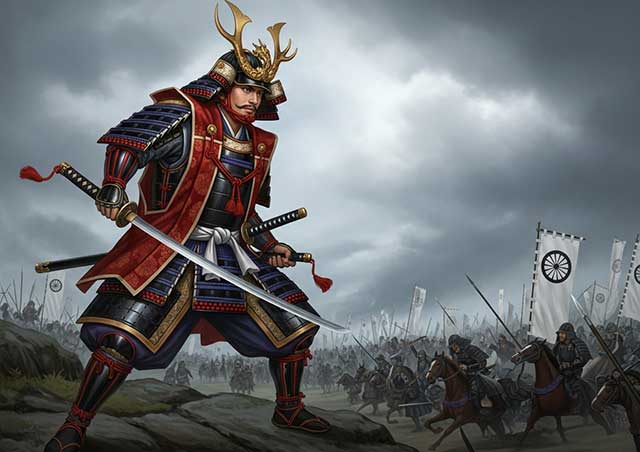
Minamoto no Yoshitsune was the son of Minamoto no Yoshitomo and his second wife, Tokiwa Gozen, as well as the younger half-brother of Minamoto no Yoritomo, the founder of the first shogunate, who had once suffered defeat in the struggle against the Taira clan. Yoshitsune spent his childhood in exile at the Kuramayama Temple. According to legend, he studied not so much Buddhist sutras there as the arts of war. At the age of fifteen, he entered the service of the governor in Mutsu, Fujiwara Hidehira.
-
Miyoshi Chokei
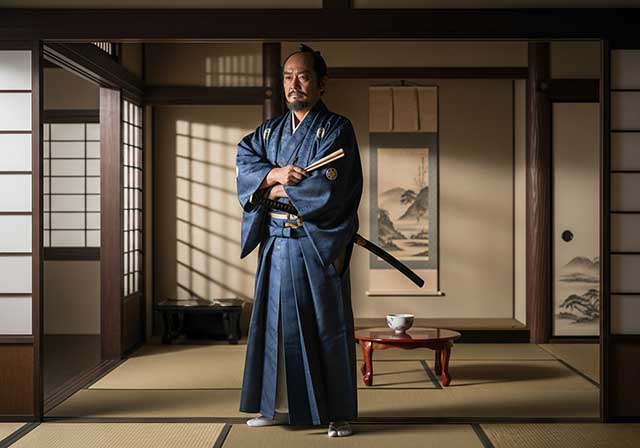
The eldest son of Miyoshi Nagamoto (Motonaga), at the age of seventeen and with the support of Miyoshi Masanaga and Matsunaga Hisahide, invaded Kinai, the inner provinces of Japan, and in 1539 seized control of Kyoto. In 1543 he expelled Hosokawa Ujitsuna from the commercial city of Sakai and appointed his own brother, Sōgo Kazunari, as the city’s new leader. In 1548 he took the name Chōkei. When a conflict arose between him and Masanaga, Chōkei appealed to his liege lord, Hosokawa Harumoto, asking him to raise troops in the provinces of Settsu, Izumi, and Kawachi, but Harumoto instead chose to ally with Masanaga against Chōkei.
-
Matsudaira Ietada
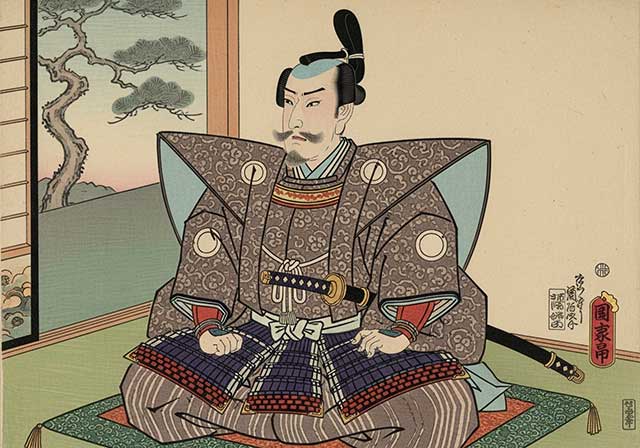
Matsudaira Ietada, also known as Tomomo-no Suke, was the eldest son of Matsudaira Koretada, the head of the Fukozu branch of the Matsudaira clan. Ietada was born in 1555 at Fukozu Castle. When he reached adulthood (for samurai children this age range was between 11 and 17), the Fukozu-Matsudaira clan was under the authority of Tokugawa Ieyasu and commanded by Sakai Tadatsugu. In the Battle of Nagashino in 1575, Tadatsugu’s unit, which included both Ietada and his father, took part in the assault on the fort on Mount Tobigasu-yama. During the fighting, Koretada was killed, and twenty-year-old Ietada became the new head of the clan.
-
Matsudaira Tadaakira

Tadaakira was the fourth son of Okudaira Nobumasa, a vassal of the Tokugawa clan, and his mother was Kame, the eldest daughter of Tokugawa Ieyasu. In 1588, Tadaakira was adopted by Ieyasu and received the Matsudaira family name; at that time, he bore the name Kiyotada.

